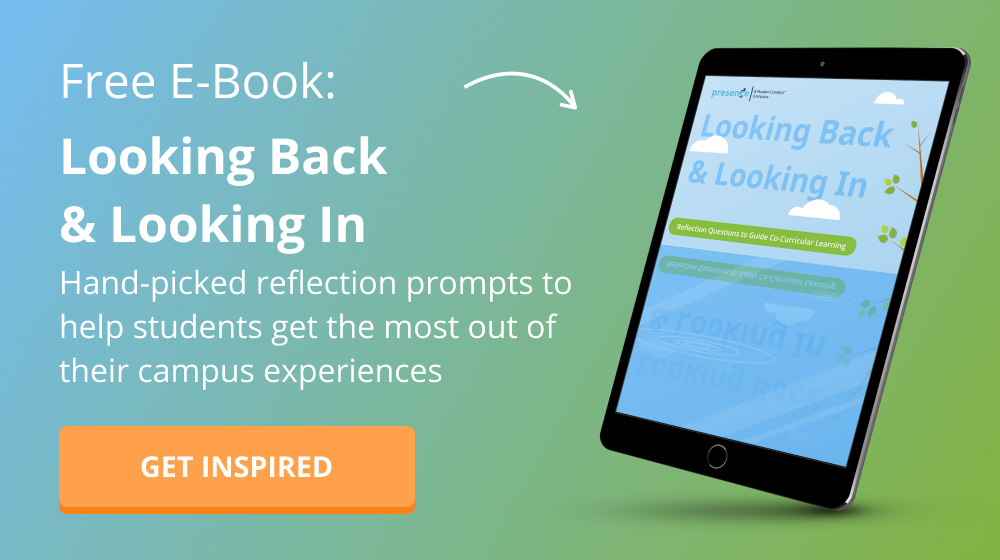When I got the news that I’d be heading back to campus for an in-person fall semester, I was partially relieved.
I knew my students would be overjoyed by the loosened health restrictions and a mostly back-to-normal run of show. They were eager to return to campus and reconnect with their peers, programs, and academic pursuits.
So, like many departments across campus, my coworkers and I braced for their arrival. We extended our building hours, prepared a robust calendar of events, and outlined developmental outcomes for our student staff and volunteers.
But there was one not-so-small problem: within the first week of the semester, six of our student staff members quit. Suddenly, the folks we relied on for day-to-day operations were no longer a part of our team. And because students’ demand for social opportunities was so high, my office was backed into a corner. We had to find a way to keep the momentum going. We had to work while understaffed through one of the most demanding seasons of student affairs.
This is not unique to my university nor to higher education. Employees are exiting en masse across the country. This great resignation is fueled by many factors: a desire for more balance, a resistance to revisit the overwhelming and inflexible aspects of a job, low pay, fear of sickness, and an excitement to experience the reopened world — just to name a few.
So, what should we do? How can my office — and thousands like it in the same predicament — fill gaps in our output and retain current employees? I’m not sure that there’s a perfect answer. Perhaps all we can do for now is take a Bandaid approach to solving problems while we wait for what we truly need: more staff.
As part of that emergency Bandaid, here are some ways you can work through — and potentially prevent — staff shortages. These patchwork solutions have managed to keep my office afloat. I hope they can serve as life savers for you too.
1. Communicate early and often
When a staff member resigns, their workload is often redistributed to other members of the team. Therefore, it’s important to keep everyone — teammates and supervisors alike — in the loop so they understand how their responsibilities may shift. Communicate a clear action plan and let them know how you plan to cover the losses.
Additionally, it’s helpful to examine and discuss overarching trends. For example, once my third staff member turned in their notice, I realized that we weren’t dealing with a one-off situation. I recognized that there was a common thread among the departures — that staff were feeling overwhelmed — and I worked to address this concern among the entire team. You can read the email I sent here, and use it as a template for your own messaging.
“We are managing far too many competing priorities and, as a result, our nervous systems are absolutely in overdrive. Please know that this is not something you have to manage alone. Because you aren’t experiencing it alone. This is a shared sentiment, and there are resources available to you.” — Excerpt of a letter I recently sent to my student staff
2. Invest in resources
Losing a coworker or supervisee also means you’ve lost your most precious resource: time. Whether you’ll have to cover a shift, start another recruitment process, or reconfigure schedules, your calendar will quickly become packed. There won’t be room for extra, supposedly “non-essential” stuff — like intentional mentorship or personal development.
But, what if I told you that permitting your supervisees and encouraging your coworkers to invest in those extra things will ultimately save your team time in the long run? The worst thing you can do when you are understaffed is to be a bystander to staff struggles. It’s in these times, more than any other, that employees need to feel valued, seen, and cared for.
Do your research by asking your employees what they need or what they’re struggling with most. If it’s health-related anxiety about returning to work, see if you can bring a clinician from the counseling center to your next staff meeting. If student staff are worried about reacclimating to in-person classes, share individualized resources available to them through the academic advising office. No matter the top concern, there is likely a professional on campus who can guide your students through obstacles.
3. Adjust your expectations
If there’s one thing I’ve learned from my years in student affairs, it’s that we usually maintain the same work output, even when we don’t have the hands to execute it. This is not a healthy expectation for individual team members, and it certainly won’t motivate your current team to stay in their roles.
As you work on hiring new staff members, brainstorm how you might be able to lighten workloads. For example, if you traditionally have a front desk staffed from 8 a.m. to midnight, see if you can shorten the hours so there is less coverage required. You could leave it open when you know students are having lunch in the dining hall or during the most popular class block time (which you could learn by chatting with the registrar’s office).
Or, if you’ve always held weekly one-on-ones with your supervisees, consider scaling them back to once a month until you regain your footing. These seemingly small time-saving measures can really add up.
4. Hire floaters or contractors
The end game is, of course, to hire new employees. And even though you may only have a limited pool of eager applicants, there are folks who need a paycheck. So, consider one of these two options:
Hire a team of floaters. This low-commitment role could be held by students who’ll learn to perform key job responsibilities but won’t have scheduled, weekly shifts. Instead, they’ll only pick up hours when traditional shifts can’t be covered.
Hire contractors. These can be folks from an outside company who do things they’re already skilled at — such as scanning event tickets, running large-scale activities, or facilitating DEI dialogues. Perhaps the money you’re saving in salaries will cover the costs of these vendors. Or they could be more affordable if you teamed up with multiple offices. Speaking of…
5. Collaborate with other departments
You are probably not the only department on campus that’s struggling with staff retention. If you have a monthly divisional gathering, it would be a great time to discuss how you might collaboratively address shared needs.
Or, if you don’t have the opportunity to connect at a specific time, consider phoning or emailing a trusted colleague to see how their services could be of use. Maybe even invite a senior student affairs officer to coffee to share some of your concerns. They might then be inspired to send out a message soliciting the support of department heads. Who knows? They could even advocate for a shift in divisional expectations during an uncharacteristically challenging time.
6. Take care of yourself and others
Ah, practicing self-care. This highly-touted concept is especially essential when you’re understaffed. When the anxiety is high and the morale is low, it’s imperative that you find pockets of balance and joy. Do not bear the burden alone.
You should empower this mindset among any staff — students and full-time professionals alike — who are carrying the weight of a fractured team. In your next one-on-one meetings, come up with a plan for how your supervisees will rest. Surprise each person with a personalized treat or write them a note of appreciation. Better yet, if your time and energy allows, volunteer to take a 10-minute segment from their shift while they grab coffee or enjoy a scenic walk around campus.
This is particularly important when you are working with customer-facing roles, such as dining hall workers and front desk receptionists. When demand is high and the supply cannot be met due to limited staffing, these employees are often the ones who have to face the most impatience, disrespect, and frustration from students, families, and visitors looking to utilize a service. These employees need to be reminded of just how valuable and appreciated they are.
7. Practice empathy and understanding
I have to admit: when I first faced the gravity of losing so many staff members, I was angry. The stress got to me. I felt like there was no one I could rely on and nothing I could do to change the trajectory of what was to come. Eventually, though, I was able to take my employer hat off and put my human hat on.
Our students are overwhelmed. They are eager to be social again, they’re rebuilding the student organizations they manage, and they’re adjusting to new academic expectations — all while navigating a world in continued crisis. In some ways, this transition may be even harder for many students than the one they abruptly experienced in spring 2020. We are expecting them to be resilient but there is no roadmap for what that looks like under these unique circumstances.
I have found that affording students grace and reallocating my gratitude to those who do show up has given me the boost I need to press on. The losses we’ve faced have also forced us to look critically at our student employee program, find the cracks, and seal them up so we can provide a working environment that builds our staff up, instead of breaking them down.
But know this: it’s not just you. It’s not just your department or just your approach to supervision. You are not the only one to blame for this great resignation. Our country is so accustomed to hustle culture that we’ve all become lost in it. And let’s not overlook the egregious supply-chain issues woven into these losses, too.
In the same way your students are stepping away to put themselves and their wellbeing first, take a moment to reflect on what you want out of your year too. This is your time to rebuild and reimagine.






